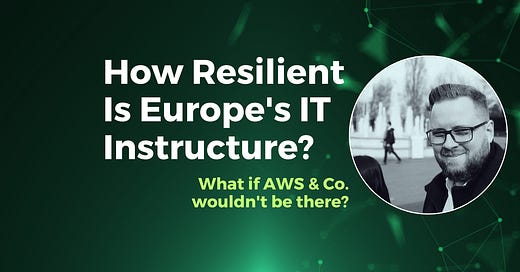What if we face a world in which European companies would need to provide their own IT infrastructure—Would the continent we prepared for this?
Would European companies be able to run their own infrastructure in all verticals, from SMB to enterprise? As IT or software development professionals, AWS, GCP, and Azure became prominent in our daily lives.
Clou…
Keep reading with a 7-day free trial
Subscribe to snackableCTO to keep reading this post and get 7 days of free access to the full post archives.






